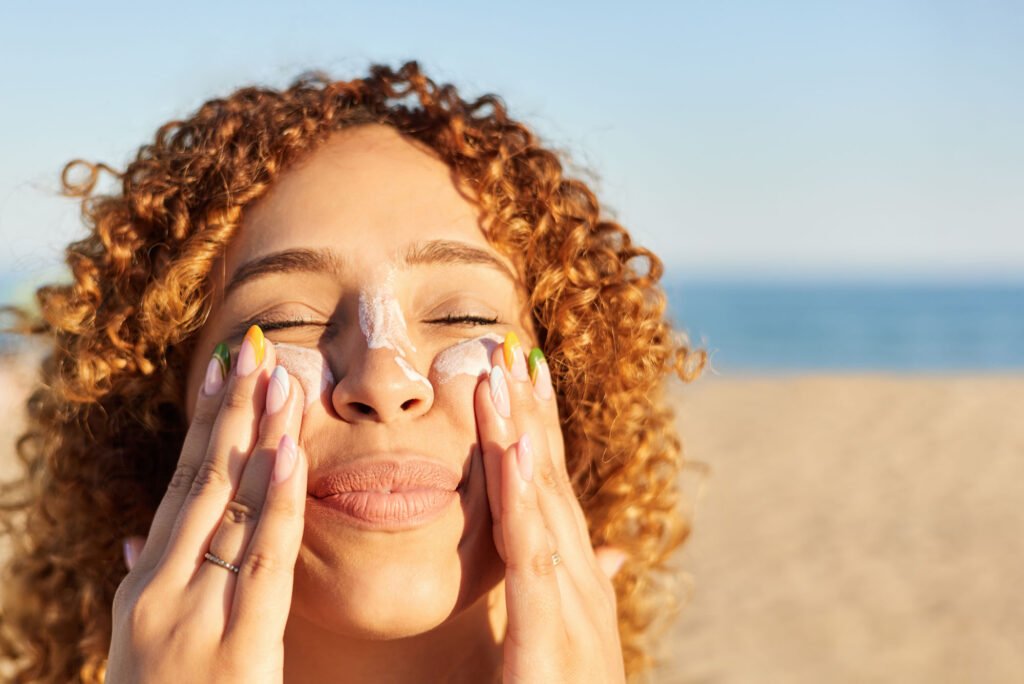When it comes to skincare, sunscreen is one of the most essential products you can use. With the sun’s harmful UV rays posing a significant risk to skin health, understanding how to choose the right sunscreen for your specific skin type is crucial. This guide will help you navigate the various types of sunscreens available, explain their importance, and offer tips on selecting the best one to ensure optimal UV protection.
Why Sunscreen is Important
Exposure to UV rays can lead to a myriad of skin problems, including:
- Premature Aging: UV rays accelerate the breakdown of collagen and elastin, resulting in fine lines and wrinkles.
- Hyperpigmentation skin: Prolonged sun exposure can lead to dark spots and uneven skin tone.
- Skin Cancer: According to the Skin Cancer Foundation, over 90% of nonmelanoma skin cancers are associated with UV exposure.
Using sunscreen daily, regardless of the weather, can protect your skin from these issues and keep it healthy and youthful.
Understanding Skin Types
Before choosing a sunscreen, it’s important to identify your skin type, as different types require different formulations for optimal results. The main skin types include:
- Normal Skin: Balanced, neither too oily nor too dry. Products with a lightweight texture work best.
- Oily Skin: Characterized by excess sebum production, leading to shine and enlarged pores. Gel-based, oil-free sunscreens are ideal for this type.
- Dry Skin: Lacks moisture and often feels tight or rough. Cream-based sunscreens with hydrating ingredients are the best choice.
- Combination Skin: A mix of oily and dry areas. A sunscreen that balances both hydration and oil control is necessary.
- Sensitive Skin: Prone to irritation and allergic reactions. Physical sunscreens with minimal ingredients are preferable.
Types of Sunscreen
Understanding the different types of sunscreens will help you choose the right product for your skin type.
1. Physical (Mineral) Sunscreen
- Active Ingredients: Zinc oxide and titanium dioxide.
- How It Works: Sits on the skin’s surface and reflects UV rays away from the skin.
- Best For: Sensitive skin types and those prone to irritation, as these ingredients are less likely to cause reactions.
Recommendation: Look for physical sunscreens that offer broad-spectrum protection (UVA and UVB).
2. Chemical Sunscreen
- Active Ingredients: Avobenzone, octisalate, octocrylene, and oxybenzone.
- How It Works: Absorbs UV rays and converts them into heat, which is then released from the skin.
- Best For: Normal to oily skin types, as these formulas tend to be lightweight and less greasy.
Recommendation: Opt for a broad-spectrum chemical sunscreen with a high SPF for adequate protection.
SPF Ratings
The Sun Protection Factor (SPF) rating indicates the level of protection a sunscreen provides against UVB rays, which are primarily responsible for sunburn. Here’s a breakdown:
- SPF 15: Blocks about 93% of UVB rays.
- SPF 30: Blocks about 97% of UVB rays.
- SPF 50: Blocks about 98% of UVB rays.
For daily use, an SPF of at least 30 is recommended. If you’re engaging in outdoor activities or swimming, consider a higher SPF and reapply every two hours.
Additional Considerations
When choosing a sunscreen, consider the following factors:
- Water Resistance: If you plan on swimming or sweating, look for water-resistant formulas that maintain protection for 40 to 80 minutes.
- Ingredients: Check the ingredient list for potential allergens, especially if you have sensitive skin. Fragrance-free and hypoallergenic products are safer options.
- Broad-Spectrum Protection: Ensure the sunscreen provides protection against both UVA and UVB rays.
- Texture and Finish: Choose a formulation that suits your preference. Gel formulas are lightweight and matte, while creams provide hydration. Stick sunscreens are also great for touch-ups.
How to Apply Sunscreen Effectively
To maximize the benefits of your sunscreen, follow these application tips:
- Apply Generously: Use about an ounce (a shot glass full) for full body coverage, and don’t forget your face, ears, and neck.
- Timing: Apply sunscreen 15-30 minutes before sun exposure to allow it to absorb properly.
- Reapply Regularly: Reapply every two hours, or immediately after swimming or sweating, to maintain effective protection.
Choosing the right sunscreen for your specific skin type is vital for achieving optimal UV protection and maintaining healthy skin. Use creams with Vitamin C in the winter. By understanding your skin type, the different types of sunscreens available, and how to apply them effectively, you can safeguard your skin from the damaging effects of sun exposure. Remember, sunscreen is not just a summer necessity; it’s an essential part of your daily skincare routine year-round. Invest in a quality sunscreen today, and enjoy healthier, more radiant skin for years to come! Don’t forget that food is very important for healthy skin. You can look for super food that contains enzymes and vitamins.







